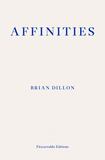
The true critic is a secret autobiographer, piecing together a covert self-portrait from responses to other people’s work. Here are the things that marked me. Here are the things I loved, the things I hated. Here is who I am. The film critic Pauline Kael, asked late in life if she might consider writing a memoir, asserted that she already had: in 12 volumes of movie reviews.
Lately, mundane – or journalistic – criticism has been bleeding into confessional memoir. Critical self-portraiture has become overt. I was in such-and-such a place, in such-and-such a mood, when I happened to encounter this new book, this new album, this new film. Partly this is because we no longer have shared standards of greatness (online, every aesthetic standard is vexed). Partly it’s our hunger for authenticity (online, everything is potentially fake). We know, or think we know, that authenticity has something to do with subjectivity. So the critic puts herself and her feelings up front – take me or leave me, I loved this, I hated it, it made me feel thusly.
That’s the mainstream (definable, nowadays, as the place where you hunt clicks and likes). In other, less frequented precincts, an older form of belletristic criticism still thrives – criticism in which the quarry is not self-advertisement but self-knowledge, and (often the same thing) knowledge of the world. Here’s where Brian Dillon comes in. Widely published in mainstream venues (the Guardian, the New Yorker, the New York Times, the London Review of Books and so on), Dillon is nevertheless not a mainstream critic. He is something altogether more interesting.
[ Brian Dillon: Trying to find my parents through faded photos and broken heartsOpens in new window ]
One of the things that makes him interesting is that he is not an academic critic. He has a troubled conscience about this, however. (Not that he should.) In his new book, Affinities, he relates an anecdote about his time as a PhD student at Trinity, “delivering my first or second academic paper to a room packed with professors and graduate students”. When he finished, “a junior academic raised his hand and said this was all very well but seemed to consist only of connections. Where were my judgments and distinctions? Where was history – no, historicity?” A quarter century later, Dillon still hears “this accusing voice” when he writes. “Are you not simply connecting some things to other things? Do you call this criticism? What’s wrong with you?”
At home with Brendan Courtney by the sea in Wicklow: ‘I wanted to simplify my life’
Wealth gap tensions: ‘My friends don’t have to budget like me. A round of cocktails scares the s**t out of me’
Alison Curtis: ‘On arriving in Ireland I was stumped at how men and women didn’t interact’
‘I’m deeply unhappy but I think leaving my husband will destroy him’
Academics might not be able to get by without historicity; but off-campus, “connecting some things to other things” might just look like one definition of thinking, and also, not incidentally, of writing. Perhaps as an act of sly revenge on that junior academic (and mark that “junior” – ouch), Dillon has assembled a book about “connecting some things to other things.” Affinities is about affinity: how artworks ping other artworks on the radar screen of the critic’s sensibility, “the way things, images and ideas sidled up to each other; seemed to seduce one another, in ways I could not (or did not want to) explain.”
The affinities aren’t always obvious; or perhaps the affinities you detect, reading, aren’t quite the affinities that Dillon has hoped to suggest. Does it matter?
Affinity, for Dillon, is “Not a question of beauty or quality or taste.” It’s “Something fleeting in fact – affinities don’t all, or always, last.” It is, in the end, “something a little bit stupid” – by which Dillon seems to mean that to perceive an “affinity” between or among certain artworks or artists must necessarily be a largely pre-intellectual experience, something that can’t be argued; something that can only be intuited, and afterwards suggested.
Unsurprisingly, Affinities is a bit of a rag-bag; after all, that’s the point. Photographers and their images: Louis Daguerre, Diane Arbus, Helen Levitt. Filmmakers and theirs: Andy Warhol. Designers: Eileen Gray, Charles and Ray Eames. Writers and their images: Thomas De Quincey, Samuel Beckett (a brilliant note on Not I), Dennis Potter, Goethe (Elective Affinities gets an unavoidable nod).
[ Essayism review: Its own kind of self-made masterpieceOpens in new window ]
The affinities aren’t always obvious; or perhaps the affinities you detect, reading, aren’t quite the affinities that Dillon has hoped to suggest. Does it matter? The point is never anything so crude as analysis; the point is mood; the point is, as Dillon says, quoting Matthew Arnold, “to see the object as in itself it really is.” It’s all about the seeing. Dillon is essentially an ekphrastic writer: a describer of static scenes, images, a caresser of details, a collector of associations and echoes.
The whole enterprise risks pretentiousness. In fact, let’s be honest: it is, sometimes, definitely pretentious. On the other hand, when it comes to this kind of criticism, nothing pretended, nothing gained. Mood is a fragile frame on which to hang a canvas; but as Dillon writes, “the work of the critic is itself a mood, with its own urgency, its own delirium, its own evanescence when its time has gone”.
To strike a pretentious note of my own: evanescence is one of the modes of beauty. It is, indeed, the mode of beauty through which Affinities operates. It is a self-portrait of the critic as, evanescently but beautifully, an artist in his own right.













